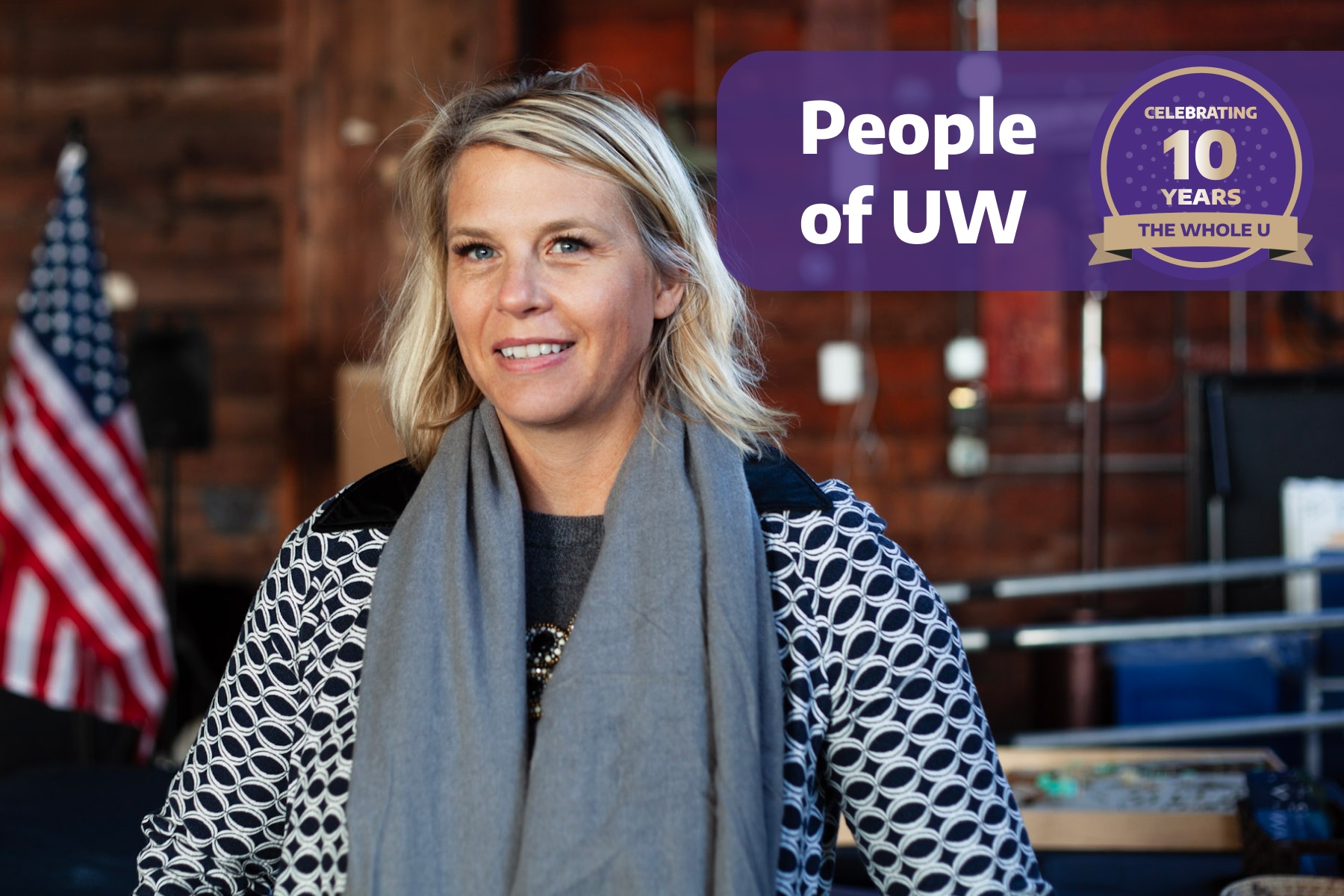
Nicole Klein connects the varied past and boundless future of the historic ASUW Shell House
Nicole Klein is not ordinarily a building hugger.
But not long ago, in the middle of a tour she was leading of the old ASUW Shell House, Klein found herself overcome by emotion, temporarily unable to speak and compelled to wrap her arms around its walls of rough-hewn Douglas fir for a lingering moment.
“I realized,” she recalls, “that I may have lost it.”
She has been reflecting lately on how a drafty old wooden hangar can elicit such intensive feelings of protection and pride, empathy and connection.
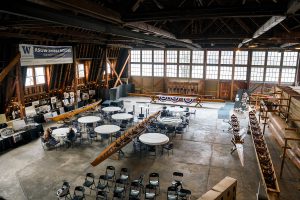
The ASUW Shell House has always served many purposes and will continue to do so after restoration. Sebastian Ky photo.
In Klein’s case, it certainly has something to do with her immersive role, over the past six years, leading the $18.5 million capital campaign to restore the now-famous home of the “Boys in the Boat.” And the building’s richly varied history—that neither begins nor ends with the “Boys.” And the indelible experiences, unforgettable adventures and passionate people she has met along the way.
But her architectural love affair also comes down to the building itself.
A working-class work of art, the Shell House is often likened to a cathedral. And for good reason.
Below its vaulted ceiling and soaring rafters, the vast slanting windows transmit a heavenly radiance (on the right day), the way that stained glass illuminates a church congregation.
“When you’re here, you feel like you’re in a special place,” Klein says. “It has an aura. Even people who don’t know what happened here—they feel it.”
And no one knows all that happened here in more intimate detail than she does.
A brief history of the Shell House
For at least eight millennia, the land separating Lakes Union and Washington served as an important portage for the Coast Salish people. In Lushootseed, it was called stəx̌ʷugʷit, or “Carry a Canoe.”
With the growing industrialization of Seattle, a massive civil engineering project connected the lakes with a shipping canal called the Montlake Cut in 1916. Two years later, the U.S. Navy built a 12,000 square foot hangar on its banks to store seaplanes and train aviators. When the First World War ended three months later, the Navy abandoned the hangar, along with other buildings constructed in the war effort.
The young but opportunistic Washington crew program, which had bounced from building to building since its inception, claimed the hangar as a permanent home on the water. It flourished there. In three decades rowing out of the rechristened ASUW Shell House, the program won eight national titles, including the UW’s first in any sport in 1923, plus two Olympic gold medals (in the eight in 1936 and four in 1948).
George Pocock, the celebrated boat-builder and rowing philosopher, plied his craft in the second-floor workshop, adapting materials and methods of Native canoe-builders to produce the finest and fastest red cedar shells in the world.
After Washington crew decamped to the state-of-the-art Conibear Shellhouse in 1949, the old hangar was repurposed as the UW Recreation Canoe House, providing boating rentals and sailing lessons, as well as home to the UW sailing team, which launched numerous national titles and Olympic champions during its heyday.
By 1975, with UW Rec relocating to the new Waterfront Athletics Center, the Shell House was considered by many to be obsolete. It was only saved from demolition by a community campaign to get it placed on the National Register of Historic Places (as the Old Canoe House).
The old hangar served for several more decades as a coveted waterfront warehouse for privately owned kayaks, canoes and rowing shells for around 150 alumni, faculty and staff.
By the turn of the century, though, this preserved place was falling into increasing obscurity and disrepair. And then a local author named Daniel James Brown produced a stirring account of that underdog Husky eight that rowed to gold and glory at the 1936 Olympics in Berlin.
The 2013 publication of “The Boys in the Boat,” Brown’s blockbuster book, immortalized those Husky oarsmen. And it put the ASUW Shell House on the map. The world map.
“The book launched a pilgrimage,” Klein says.
A few years later, her own path would converge with this hallowed hall.
What’s a double Duck doing in a purple place like this?
Nicole Klein was born and raised in Coos Bay, a town on the Oregon coast with a history of logging and fishing. She studied art history and political science at the University of Oregon. “I loved art history because you’re constantly comparing and contrasting and finding patterns,” she says. “And I paired it with politics because I love to argue.”
A master’s degree from UO in museum administration followed. But Klein found the path to museum direction to be far more circuitous than she had imagined.
After moving to Seattle in 2005, she worked as a temp at Seattle City Light and the University of Washington. A fateful placement with the UW Regional Advancement team evolved into fundraising positions there and at UW Medicine and the College of Arts & Sciences.
After taking a few years off to focus on raising her two young boys, Klein rejoined the UW as a fundraiser for Student Life. In summer of 2017, Matt Newman, the newly hired director of UW Recreation, presented an opportunity that would change her life: leading the campaign to restore the Shell House and envision its next 100 years.
The original project scope was two years and $5-7 million. Klein thought it looked like a straightforward marriage of her education and experience.
“I can get pulled into too many things pretty easily,” she admits. “So I thought, This is just one project. It will be good for you, Nicole.”
It turned out to be a bit more complicated than she might have anticipated.
Include everyone
Klein assembled an advisory board co-chaired by Brown, the author, and Judy Rantz Willman, the daughter of his book’s primary protagonist, Joe Rantz. Its 40 members include rowers, relatives of the 1936 team, historians, architects, sailors, aviators, tribal leaders, faculty, staff and students. “A lot of passionate people,” she says.
She quickly came to understand that the building was beloved by more than just fans of “The Boys in the Boat.” “It matters to so many people and for so many reasons,” Klein says. “And they don’t all, at first, appear to overlap.”
So, the crux of her job, she realized, would be connecting the building’s whole past—and entire community of stakeholders—to a unified future.
Klein collaborated with faculty and students across the university, in architecture, art, anthropology, human centered design, the Foster School of Business and the Burke Museum. She forged partnerships with the wider Seattle community, too, through active participation in Seattle Rotary, HistoryLink and Puget Sound Maritime, to name a few.
She deployed some guerilla PR tactics. Opened doors to anyone with interest. And sometimes shocked people with comparisons to Hayward Field, the signature structure of her alma mater, the University of Oregon. (“Eugene is Track Town, USA. Our Husky rowing coaches believe that Seattle should be Row Town, USA”).
And she came to view everyone as a potential donor. “I skipped the traditional quiet phase of this campaign and went loud early,” Klein admits. “It was a way of working around some tunnel vision that people had about the building and making it about community and our collective history.”
She never forgot the words of an early supporter, who told her that the restored Shell House needs to fulfill a need, not a want, and do something that no other building on campus can do.
“That was an evocative way of thinking,” Klein says. “Let’s not repeat ourselves. Let’s really dream big about the potential. It took us a while to get there.”
Experience everything
To immerse herself in the project, Klein set out to experience as many aspects of the building’s history as possible. She took off from Union Bay in a roaring de Havilland Beaver seaplane (“And I’m afraid to fly,” she says). She took a six-week rowing class—twice (“And I have the blistered hands to prove it.”).
Perhaps most indelible was her opportunity to train and pull with the UW Canoe Family, č̓away̓altxʷ ʔiišəd, the collective of Native UW students, faculty, staff, elders and other community members formed to paddle the annual Tribal Journey in the hand-carved Willapa Spirit, which has resided in the Shell House since 2018.
The Willapa Spirit took center stage at the Shell House memorial of Marvin Oliver, the beloved Native artist, educator and UW professor emeritus who painted the colorful artwork on the hull with his children. An elder explained that, on these ancestral lands, the Duwamish people would lay their dead to rest in tree limbs so that their bodies would disintegrate into the root systems and become part of the tree. “Our ancestors are above us in these beams,” he said, raising his hands and eyes to the rafters.
“I still get goosebumps,” Klein says. “This place is full of ancestors. It is literally made of them.”
Pulling together
Experiences like these inspired Klein to evangelize the power of this place to so many collaborators and contributors. Fundraising picked up steam after the pandemic. In 2022, Microsoft President Brad Smith and his wife Kathy Surace-Smith made a transformational gift, followed by a major contribution from Microsoft.
To date, more than a thousand donors—including many UW faculty and staff—have powered the campaign, which met its fundraising goal just after the December premiere of George Clooney’s film adaptation of Brown’s bestseller.
Recognizing the titanic effort to orchestrate this effort, Klein and her team received the Outstanding Achievement in Historic Preservation from the Washington State Department of Archaeology and Historic Preservation.
“Nicole has navigated through so many difficult challenges to bring awareness to and funding of the Shell House restoration to a successful close,” says Bruce Avolio, director of the Foster School Center for Leadership and Strategic Thinking and one of the legion of partners pulled into Klein’s shared endeavor. “She brought everyone into ‘the boat’ of supporters, with a relentless drive and a tremendous capacity to reach out and enlist a broad range of stakeholders.”
Stephanie Doyle, the associate vice president for development programs and strategy in UW Advancement (and a former national championship-winning Husky coxswain), counts Klein as “a wonderful colleague, whose commitment to cause and impact have made such a difference at the UW. She dives in to projects and takes such a wide view of who might be interested. She develops advocates, friends and passionate supporters, creates and supports community and, through the Shell House project, has brought so many people in and back to the UW.”
The next chapter
Now that funding is secure, Klein says the actual restoration, ambitiously scheduled to be complete by summer of 2026, will be done with a light hand. “The Shell House needs a spa day,” she jokes.
The structure will be reinforced and returned to its original condition and shape, including the gaping windows that follow the slant of the walls. The massive rolling doors will once more open wide to the water. And the Pocock workshop—the “heartbeat” of the building—will be restored and staffed with a working wooden boat-builder.
Though it may touch the sublime, the Shell House will retain its essential utilitarian scruff, emblematic grit and broad-shouldered heritage that has seen it through many decades and adaptations.
And it will not be just a museum, but rather, as Klein describes it, “a place of collective history.”
The threads of Indigenous portage, military aviation, rowing, sailing and recreation will be connected and displayed in the eaves of its interior walls. The massive bay will serve as a gathering space for anyone and everyone—hosting conferences, celebrations, competitions, memorials, lectures, dedications, graduations and performances.
In a symbolic sense, Klein envisions the restored ASUW Shell House as a new gateway to campus from the water—and one of Seattle’s essential landmarks.
“I want people to walk in from all kinds of backgrounds and all over the world and feel a closeness to the building,” she says. “I think it has a calling, more than anywhere on campus, to think bigger. It’s an entryway. It should be inviting to everyone.”
Klein couldn’t have dreamed that the project she took on in 2017 would change her life so profoundly. “I couldn’t be more honored to have had a role in bringing the ASUW Shell House—our own proud WWI hangar that was built upon ‘Carry a Canoe’—back to life,” she says.
“It’s a building that belongs to us all. A part of our collective history that has an exciting future ahead.”
With principal fundraising complete, Nicole Klein recently joined the UW Student Life advancement team. She will continue to support community engagement for the ASUW Shell House as restoration moves into the design/build phase.
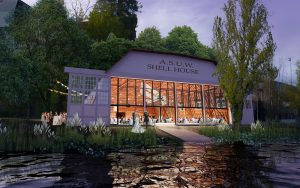 Get on board!
Get on board!
You can still support the restoration and operation of the ASUW Shell House. And contact Nicole Klein if you are interested in joining an upcoming tour or open house.
Or just take a stroll down the waterfront bask in this magnificent manifestation of the Pacific Northwest heritage.
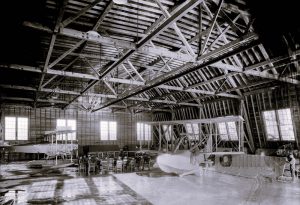
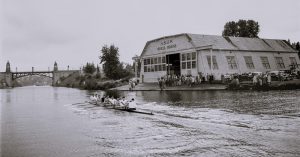
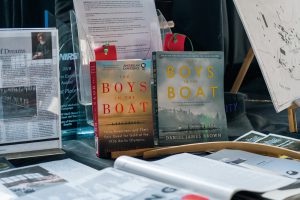
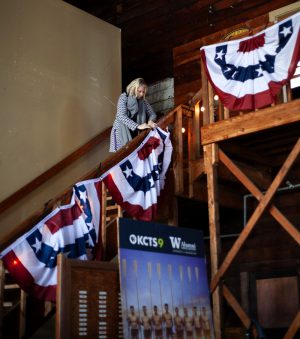
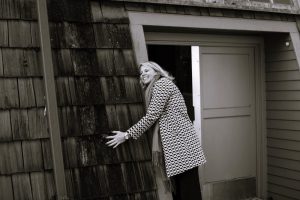
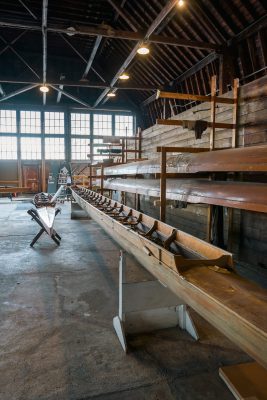
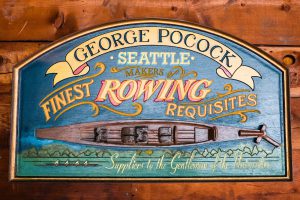
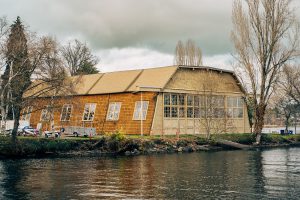
3 Thoughts on “Nicole Klein connects the varied past and boundless future of the historic ASUW Shell House”
On January 28, 2024 at 9:44 AM, Jerry warbis said:
With a tear in my eye I read this article, you see Nicole is my daughter! I’m so proud of her, I remember her catching salmon and rock fish off of Coos Bay, learning to steer our boat, before she was in junior high. Her loafer boats in the water runs deep. I’m so proud of you, girl!
On January 29, 2024 at 5:34 PM, Craig Stewart said:
Nicole deserves our (community) collective thanks. She is such an incredible connector and listener. She clearly has been the “coxswain” in this campaign! Well done Nicole!
On January 31, 2024 at 9:47 AM, Sheryl Stiefel said:
BRAVO!
From the beginning, Nicole, you have been the right person, at the right time. The “right stuff” – tenacity and vision. You’re just a “Big ‘O’ Dawg!!” Many hugs for barking up the right tree and widening the circle of “Love Dub.”
CONGRATULATIONS!
Comments are closed.